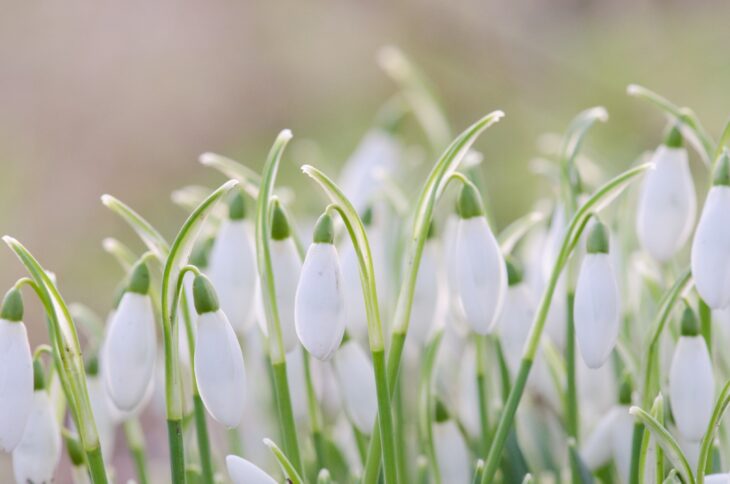A stroll with the snowdrops
,

Cumbernauld Snowdrops, c. Katrina Martin/2020Vision
Hope’s Flower, Eve’s Tears, the beautiful Fair Maids of February, the portentous Death Bell or maybe even just simple Dingle Dangles. Whatever you call them, snowdrops have arrived in Cumbernauld’s woods. Legend says that snowdrops were the only flower kind enough to share their colour with the newly made snow and thus became the only flower able to grow amongst it, allowing them to capture people’s hearts as the harbinger of spring.
Snowdrops aren’t native to Scotland, they probably arrived here in the 16th century, but they aren’t regarded as invasive due to their slow spreading habits and their value as an early nectar source. They are perfectly adapted to the cold, able to protect their delicate flowers and survive in the harshest conditions.
Although we may be most familiar with Galanthus nivalis, the common form of snowdrop, there are actually more than 20 species and more than 2000 cultivated varieties. ‘Galanthophiles’, those who collect the flowers, will pay big money for a new type – one single rare bulb once changed hands for £1390! This trade may be part of the reason why snowdrops are now considered to be an endangered species and their collection and trade is strictly regulated.
They have been a source of inspiration for artists, poets and writers for centuries but for me they will always be most valuable for that first sign, looked for every year on cold dark winter mornings, when the first white flower, trembling on its single green foot, braves the cold and announces that, no matter how dark and long it has been, winter will pass and spring must come.
Cumbernauld Living Landscape’s Wild Ways Well project will be focussing on snowdrops this coming Saturday, you can come along and join us to explore Cumbernauld Glen and spot your own signs of spring.
